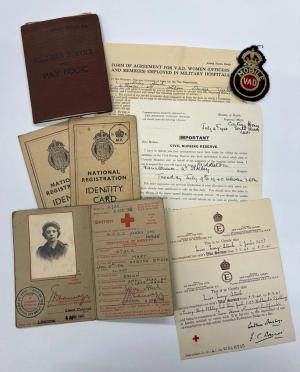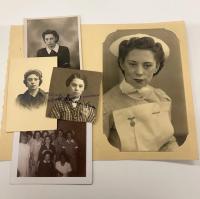
Guest Blog: Discovering the History of Nursing in the South Pennine Archives
By Kelly Swaby, Public Engagement Fellow at Pennine Heritage
Kelly Swaby is a Public Engagement Fellow at Pennine Heritage, sponsored by the British Society for the History of Science. She is a PhD researcher at the University of Huddersfield, and specialises in the history of nursing. In this blog, she gives a first look at her research in the South Pennine Archives, and how it will contribute to a new educational propgramme.
In August, I was honoured to be chosen as Pennine Heritage’s British Society for the History of Science Public Engagement Fellow.
The fellowship has afforded me the opportunity to explore the South Pennine Archives. This collection provides incredible insight into the history of the South Pennine area from various perspectives, whether it be local politics, local industry or local health provision and nursing.
My research has focussed on a new addition to the archives: the personal collection of Mary Atack, who was born and raised in Hebden Bridge before embarking on a remarkable life. Atack was involved with St John’s Ambulance in the 1930s and served in the Civil Nursing Reserve during the early years of the Second World War, before qualifying as a Registered Nurse in 1945. During her career, Mary witnessed the introduction of the National Health Service, eventually retiring as a Matron in the mid-1970s. All too often in nursing history, few nurses are remembered, with Florence Nightingale being an exception, but Mary Atack is a name that should be widely known. The Atack collection is extensive and details not just a remarkable nursing career but also points to and shines a light on key moments in wider British history.

Above: A selection of portraits of Mary Atack, including one in her nursing uniform.
The BSHS Fellowship Public Engagement project will introduce Key Stage Two students to Mary’s fascinating life, discussing her job during the war and the critical role healthcare played during the twentieth century and the Second World War, all through Mary’s experiences and perspective. It will be an innovative way to learn about the past and an excellent opportunity for students to immerse themselves and get hands-on with history.

Above: A selection of Mary's documents, including her National Identity Cards and Pay Book.